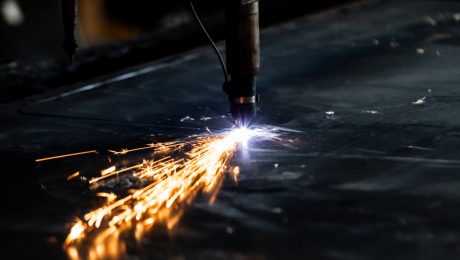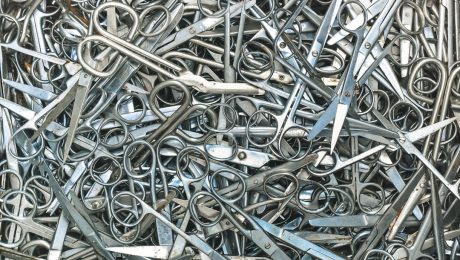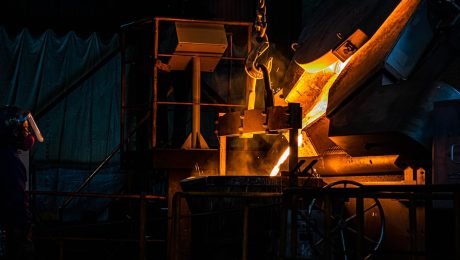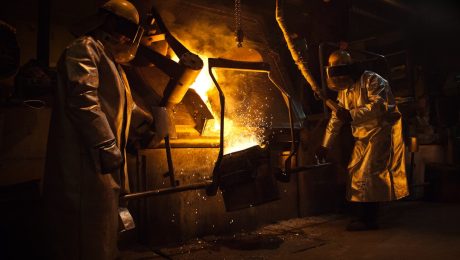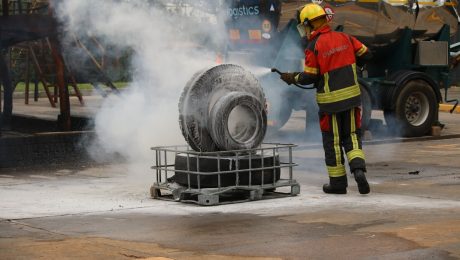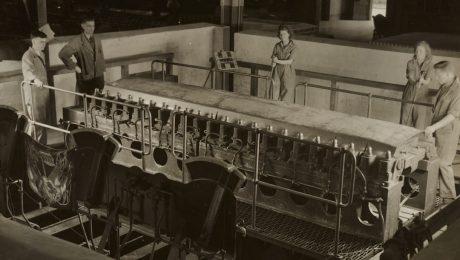Universal Parallel Flange (UPN) profiles, also known as parallel flange channels, are versatile structural steel sections widely employed in various engineering applications. Their unique geometry, characterized by parallel flanges and a web, makes them ideally suited for a range of structural tasks, from supporting beams and columns to forming frameworks and bracing systems. This comprehensive guide delves into the intricacies of UPN profiles, exploring their properties, applications, and design considerations.
Understanding UPN Profile Geometry and Properties
UPN profiles are defined by their dimensions, specifically the height (depth), width (flange width), and thickness of the web and flanges. These dimensions directly influence the section’s area, moment of inertia, section modulus, and radius of gyration. These properties are crucial in determining the profile’s load-bearing capacity and suitability for a particular application. Manufacturers provide detailed specifications, including material properties (typically mild steel, but other grades are available), which are essential for accurate structural calculations. Understanding these properties is the foundation for successful UPN profile design and selection. Furthermore, the parallel flanges contribute to efficient load distribution, making them suitable for applications where bending stresses are significant. The relatively high section modulus for their weight offers a good strength-to-weight ratio, a key consideration in many structural projects.
UPN Profile Applications in Structural Design
The versatility of UPN profiles lends itself to a wide array of applications in structural engineering. They are commonly used as:
- Beams and Girders: UPN profiles can effectively support loads over spans, particularly in situations where lateral stability is crucial. Their parallel flanges contribute to increased resistance against bending.
- Columns and Supports: Used as vertical supports, often in conjunction with other structural members, UPN profiles provide stability and transfer loads to foundations.
- Bracing and Lateral Support: Their shape makes them excellent for bracing systems, enhancing the stability of larger structures against lateral forces (wind, seismic activity).
- Framework Members: In building frameworks, UPN profiles are frequently used as secondary beams, connecting primary structural members and distributing loads.
- Railings and Handrails: Their strength and relatively slender profile make them suitable for railings and handrails in various applications.
The specific application dictates the required profile size and grade of steel, emphasizing the importance of accurate load calculations and material selection.
Design Considerations and Load Calculations for UPN Profiles
Designing with UPN profiles necessitates careful consideration of various factors. Accurate load calculations are paramount. These calculations must account for:
- Dead Loads: The weight of the structure itself and permanently attached elements.
- Live Loads: Variable loads such as occupancy loads, snow loads, and wind loads.
- Impact Loads: Loads resulting from sudden impacts or vibrations.
Appropriate safety factors are applied to these calculated loads to ensure structural integrity. Software packages and hand calculations using relevant structural engineering formulas are employed to determine the required section properties and ensure that the chosen UPN profile can adequately withstand the anticipated loads. Furthermore, connection design is crucial; welding, bolting, or a combination of methods are used to securely join UPN profiles to other structural members. The strength of the connections must be sufficient to prevent failure under load.
Comparing UPN Profiles with Other Steel Sections
UPN profiles are often compared to other steel sections like I-beams (IPE profiles), channels (U profiles), and angles. Each section type possesses unique strengths and weaknesses. I-beams generally offer superior bending resistance due to their larger moment of inertia, but they are also heavier. Channels (U profiles) are similar to UPN profiles but lack the parallel flanges, potentially reducing their bending stiffness. Angles are used for bracing and connections but are less efficient for beam applications. The choice of section depends on the specific design requirements, balancing factors such as strength, weight, cost, and availability.
Material Selection and Corrosion Protection for UPN Profiles
The material properties of UPN profiles significantly influence their performance. Mild steel is the most common material, offering a good balance of strength and cost-effectiveness. However, higher-strength steels or specialized alloys might be necessary for demanding applications. Furthermore, corrosion protection is crucial for ensuring the long-term durability of UPN profiles, especially in outdoor or corrosive environments. Common methods include hot-dip galvanizing, painting, and powder coating. The choice of corrosion protection method depends on the environmental conditions and the required lifespan of the structure. Proper surface preparation is essential for optimal adhesion and effectiveness of the chosen protection method.
In conclusion, UPN profiles are indispensable components in many structural engineering projects. Understanding their properties, applications, and design considerations is crucial for engineers to utilize these versatile sections effectively and safely. By carefully selecting the appropriate profile size and grade, implementing robust connection designs, and incorporating adequate corrosion protection, engineers can leverage the strength and efficiency of UPN profiles to create durable and reliable structures.
Tags: UPN profiles, structural engineering, steel sections, design calculations, structural design
body {
font-family: sans-serif;
line-height: 1.6;
}
h1, h2, h3 {
color: #333;
}
h1 {
font-size: 2.5em;
}
h2 {
font-size: 2em;
}
h3 {
font-size: 1.5em;
}
Cold drawn round steel bars are a fundamental component in countless industries, providing exceptional strength, precision, and durability. Understanding their properties, manufacturing process, and applications is crucial for engineers and manufacturers seeking high-performance materials. This comprehensive guide delves into the world of cold drawn round steel bars, offering valuable insights for optimal selection and utilization.
The Manufacturing Process: From Hot Rolled to Precision
The journey of a cold drawn round steel bar begins with hot-rolled steel. Hot rolling involves shaping steel at high temperatures, resulting in a bar with a relatively rough surface and slightly larger dimensions than the final product. The hot-rolled bar then undergoes a crucial process: cold drawing. This involves pulling the bar through a series of progressively smaller dies at room temperature. This process significantly reduces the bar’s diameter, improving its surface finish, dimensional accuracy, and mechanical properties. The cold working process introduces significant strain hardening, increasing the steel’s tensile strength and yield strength. The precise control over the drawing process allows for the creation of bars with incredibly tight tolerances, making them ideal for applications demanding high precision.
Exceptional Mechanical Properties: Strength and Beyond
Cold drawing significantly enhances the mechanical properties of steel. The process induces strain hardening, leading to a substantial increase in tensile strength and yield strength compared to hot-rolled counterparts. This means the bars can withstand greater forces before yielding or fracturing. Furthermore, cold drawing improves the surface finish, leading to increased fatigue resistance. The smoother surface reduces stress concentration points, which are areas where cracks are more likely to initiate and propagate. The improved surface finish also enhances the bar’s resistance to corrosion, particularly in applications where surface imperfections could trap moisture or contaminants. The precise control over the drawing process allows for the creation of bars with specific mechanical properties tailored to individual applications.
Diverse Applications: Where Strength Meets Precision
The combination of high strength, precision dimensions, and excellent surface finish makes cold drawn round steel bars incredibly versatile. They find widespread application in various industries, including:
- Automotive: Used in components like axles, crankshafts, and connecting rods, where high strength and fatigue resistance are critical.
- Aerospace: Employed in aircraft structures and landing gear components, demanding exceptional strength-to-weight ratios.
- Construction: Utilized in reinforcing bars and structural components, providing essential strength and durability.
- Machinery: Used as shafts, spindles, and other components in various machinery, ensuring smooth operation and long service life.
- Manufacturing: Serves as raw material for precision components, such as pins, bushings, and fasteners.
Selecting the Right Grade: Understanding Steel Specifications
Choosing the appropriate grade of cold drawn round steel bar is crucial for ensuring the component’s performance and longevity. Different grades possess varying mechanical properties, chemical compositions, and levels of surface finish. Commonly used grades include:
- 1018 Steel: A medium-carbon steel offering good strength and machinability.
- 1045 Steel: A higher-carbon steel providing increased strength and hardness but with slightly reduced machinability.
- 4140 Steel: A medium-alloy steel known for its excellent strength, toughness, and hardenability.
Understanding the specific requirements of your application, including strength, toughness, machinability, and corrosion resistance, will guide you in selecting the optimal steel grade.
Advantages of Cold Drawn Round Steel Bars: A Summary
The advantages of using cold drawn round steel bars are numerous:
- High Tensile Strength and Yield Strength: Superior strength compared to hot-rolled bars.
- Excellent Surface Finish: Improved fatigue resistance and corrosion resistance.
- High Dimensional Accuracy: Tight tolerances, reducing machining requirements.
- Enhanced Machinability: Depending on the grade, some offer improved machinability compared to hot-rolled counterparts.
- Cost-Effective: While the initial cost might be slightly higher, the improved properties often lead to cost savings in downstream processing and reduced maintenance.
Choosing cold drawn round steel bars can significantly enhance the performance and longevity of your products.
This comprehensive guide provides a solid foundation for understanding cold drawn round steel bars. Remember to consult with material specialists to ensure the selection of the appropriate grade for your specific application. The strength and precision offered by these bars are invaluable assets in various industries, contributing to the creation of durable and high-performance components.
SEO Tags:
cold drawn steel bars, cold drawn round steel, steel bar specifications, steel bar applications, mechanical properties of steel
body {
font-family: sans-serif;
line-height: 1.6;
}
h1, h2, h3 {
color: #333;
}
h1 {
font-size: 2.5em;
}
h2 {
font-size: 2em;
}
h3 {
font-size: 1.5em;
}
The steel industry is built on precision and reliability. Meeting stringent quality standards is paramount, ensuring the structural integrity and performance of steel products across various applications, from skyscrapers to automobiles. The American Society for Testing and Materials (ASTM) International plays a crucial role in defining these standards, and compliance is essential for manufacturers to maintain credibility and market competitiveness. This comprehensive guide explores the intricacies of ASTM compliance in steel production.
Understanding ASTM Standards for Steel
ASTM International develops and publishes voluntary consensus standards that are widely adopted globally. These standards cover a vast range of materials, including steel, and dictate specifications for chemical composition, mechanical properties, and testing methods. For steel, specific ASTM designations, such as A36 (structural steel), A572 (high-strength low-alloy steel), and A992 (high-strength low-alloy structural steel), define the acceptable ranges for elements like carbon, manganese, silicon, and phosphorus. These standards also specify required mechanical properties like tensile strength, yield strength, elongation, and hardness. Adherence to these specifications guarantees consistent performance and predictability in the final product.
The Importance of Material Testing and Quality Control
ASTM compliance isn’t simply about meeting chemical composition requirements; it mandates rigorous testing throughout the steel production process. This includes chemical analysis to verify the elemental composition, mechanical testing (tensile, impact, hardness) to determine the material’s strength and toughness, and non-destructive testing (NDT) methods such as ultrasonic testing, magnetic particle inspection, and radiographic testing to detect internal flaws. These tests are crucial for quality control, ensuring that the steel meets the specified ASTM standards and identifying any deviations early in the production process. Effective quality control minimizes defects, reduces waste, and ultimately safeguards product safety and reliability.
Certification and Accreditation: Demonstrating ASTM Compliance
Demonstrating compliance with ASTM standards requires more than just internal testing. Independent third-party certification is often necessary to provide assurance to clients and regulatory bodies. Accredited testing laboratories, following ISO/IEC 17025 standards, perform independent testing and verification to ensure that the steel produced meets the specified ASTM requirements. Obtaining a certificate of compliance from a reputable certification body strengthens a manufacturer’s credibility and enhances their competitiveness in the marketplace. This certification serves as irrefutable evidence of adherence to the rigorous standards set forth by ASTM.
Consequences of Non-Compliance with ASTM Standards
Failure to comply with ASTM standards can have severe consequences. From a reputational standpoint, non-compliance can damage a manufacturer’s credibility and trust with clients. More critically, non-compliant steel can lead to structural failures, posing significant safety risks. This can result in costly repairs, legal liabilities, and even loss of life. Regulatory bodies may impose penalties for non-compliance, potentially including fines, production shutdowns, and even legal action. Therefore, maintaining strict adherence to ASTM standards is not merely a matter of quality control but a critical aspect of responsible manufacturing and safety.
Staying Updated with Evolving ASTM Standards
ASTM standards are regularly reviewed and updated to reflect advancements in materials science, manufacturing techniques, and safety regulations. Staying abreast of these changes is crucial for steel manufacturers. This involves actively monitoring ASTM updates, participating in industry events and conferences, and engaging with industry experts. Regular internal audits and training programs are essential to ensure that employees are aware of the latest standards and best practices for ASTM compliance. Continual improvement and adaptation are vital for maintaining competitiveness and ensuring the highest levels of quality and safety in steel production.
In conclusion, ASTM compliance is fundamental to the success and safety of the steel industry. By adhering to these rigorous standards, manufacturers can guarantee the quality and reliability of their products, build trust with clients, and mitigate potential risks. A commitment to rigorous testing, independent certification, and continuous improvement is essential for forging excellence in steel production.
SEO-Friendly Tags:
- ASTM Steel Standards
- Steel Quality Control
- ASTM Compliance Certification
- Material Testing for Steel
- Steel Production Standards
The world runs on steel. From the intricate gears in your car to the robust framework of skyscrapers, steel components are the backbone of countless industries. Original Equipment Manufacturers (OEMs) rely heavily on the consistent supply of high-quality steel components, demanding precision, durability, and cost-effectiveness. This post delves into the multifaceted world of OEM steel component production, exploring the key processes, challenges, and future trends shaping this vital sector.
1. The Steel Selection Process: Choosing the Right Material for the Job
The journey of an OEM steel component begins with material selection. This crucial step dictates the final product’s performance characteristics, including strength, ductility, weldability, and corrosion resistance. OEMs work closely with steel suppliers to specify the exact grade of steel needed based on the application. Common steel grades used include low-carbon steel, medium-carbon steel, high-carbon steel, alloy steels, and stainless steels. Each grade offers a unique balance of properties. For instance, low-carbon steel is readily formable but may lack the strength of high-carbon steel, which is ideal for high-stress applications. The selection process considers factors like:
- Intended application and required performance: Will the component withstand high loads, extreme temperatures, or corrosive environments?
- Cost considerations: Balancing performance requirements with economic viability is crucial.
- Manufacturing process compatibility: The chosen steel grade must be suitable for the chosen manufacturing techniques (e.g., forging, casting, machining).
- Availability and supply chain reliability: Ensuring a consistent supply of the chosen steel grade is paramount for continuous production.
2. Manufacturing Processes: From Raw Material to Finished Component
Once the steel grade is selected, the manufacturing process begins. Several methods are employed, each offering advantages and disadvantages depending on the component’s design and required tolerances. Common processes include:
- Forging: This process involves shaping the steel using compressive forces, resulting in high strength and integrity. Forging can be hot or cold, depending on the steel grade and desired properties.
- Casting: Molten steel is poured into a mold, allowing for complex shapes. Casting is cost-effective for high-volume production but may require further machining to achieve precise dimensions.
- Machining: This subtractive process uses tools to remove material from a pre-shaped steel blank, achieving high precision and surface finish. Machining is suitable for smaller batches and complex geometries.
- Rolling: Used for producing long lengths of steel with consistent cross-sections, often used as a precursor to other processes.
- Powder Metallurgy: Steel powder is compacted and sintered to form the component, offering excellent control over material properties and the ability to create intricate shapes.
3. Quality Control and Assurance: Ensuring Consistent Excellence
Maintaining consistent quality is paramount in OEM steel component production. Rigorous quality control measures are implemented throughout the entire process, from raw material inspection to final product testing. These measures ensure that the components meet the required specifications and perform reliably in their intended application. Common quality control techniques include:
- Dimensional inspection: Verifying that the component dimensions are within the specified tolerances using various measuring tools.
- Material testing: Assessing the mechanical properties of the steel, such as tensile strength, yield strength, and hardness.
- Non-destructive testing (NDT): Identifying internal flaws or defects without damaging the component, using methods such as ultrasonic testing, radiography, and magnetic particle inspection.
- Surface finish inspection: Evaluating the surface quality for defects like scratches, pitting, or roughness.
- Statistical process control (SPC): Monitoring the manufacturing process to identify and correct variations that could lead to defects.
4. The Supply Chain and Logistics: A Seamless Flow of Materials
Efficient supply chain management is critical for successful OEM steel component production. OEMs must establish reliable relationships with steel suppliers, ensuring a consistent supply of high-quality materials. Logistics plays a crucial role in transporting materials efficiently to the manufacturing facility and delivering finished components to customers on time. Effective supply chain management involves:
- Supplier selection and relationship management: Choosing reputable suppliers who meet quality and delivery requirements.
- Inventory management: Optimizing inventory levels to minimize storage costs while ensuring sufficient material availability.
- Transportation and logistics: Efficiently transporting materials and finished components using appropriate modes of transportation.
- Risk management: Identifying and mitigating potential risks in the supply chain, such as material shortages or transportation delays.
- Traceability: Maintaining detailed records of the origin and processing of materials to ensure accountability and quality tracking.
5. Future Trends in OEM Steel Component Production: Innovation and Sustainability
The future of OEM steel component production is shaped by several key trends. Innovation in materials science is leading to the development of advanced high-strength steels with improved properties. Additive manufacturing (3D printing) is gaining traction, offering the potential to create complex shapes with minimal material waste. Sustainability is also a growing concern, driving the adoption of more environmentally friendly manufacturing processes and the use of recycled steel.
- Advanced high-strength steels: Offering improved strength-to-weight ratios, leading to lighter and more efficient components.
- Additive manufacturing: Enabling the production of complex geometries and customized components.
- Sustainable manufacturing practices: Reducing energy consumption, waste generation, and environmental impact.
- Digitalization and automation: Improving efficiency and precision through automation and data-driven decision-making.
- Focus on lightweighting: Reducing the weight of components to improve fuel efficiency and reduce emissions.
In conclusion, OEM steel component production is a complex and dynamic process requiring meticulous attention to detail at every stage. From material selection to final delivery, quality, efficiency, and sustainability are paramount. The future of this vital industry promises continued innovation and advancement, driving further improvements in performance, cost-effectiveness, and environmental responsibility.
SEO Tags: OEM steel components, steel component manufacturing, steel production, automotive steel parts, industrial steel components
body { font-family: sans-serif; line-height: 1.6; }
h1, h2, h3 { color: #333; }
h1 { font-size: 2.5em; }
h2 { font-size: 2em; }
h3 { font-size: 1.5em; }
The steel industry, a cornerstone of global infrastructure, is undergoing a significant shift towards sustainability. Driven by environmental concerns and increasingly stringent regulations, the focus is on developing and implementing energy-efficient steel products. This transition isn’t just about reducing carbon footprints; it’s about creating a more economically viable and environmentally responsible future for steel production and consumption.
The Energy Intensity of Traditional Steelmaking
Traditional steelmaking processes are notoriously energy-intensive. The blast furnace route, the most common method, relies heavily on coke (derived from coal) as a reducing agent, leading to significant CO2 emissions. The high temperatures required for melting and refining iron ore also demand vast amounts of energy, typically from fossil fuels. This energy-intensive nature contributes significantly to the industry’s overall carbon footprint, making it a key target for decarbonization efforts.
Beyond the direct energy consumption, the transportation of raw materials and finished products adds further environmental burdens. Optimizing logistics and transportation efficiency is therefore crucial in reducing the overall lifecycle energy consumption of steel.
Innovative Steelmaking Technologies for Enhanced Efficiency
The pursuit of energy-efficient steel has spurred the development of innovative technologies aimed at reducing energy consumption and greenhouse gas emissions. These include:
- Electric Arc Furnaces (EAFs): EAFs utilize electricity to melt scrap steel, significantly reducing reliance on fossil fuels compared to blast furnaces. The increasing availability of scrap metal makes EAFs a more sustainable option, particularly when powered by renewable energy sources.
- Hydrogen-based Steelmaking: Research and development are heavily focused on replacing coke with hydrogen as a reducing agent in steelmaking. Hydrogen, when produced from renewable sources, offers a pathway to virtually carbon-neutral steel production. While still in its early stages, this technology holds immense potential for transforming the industry.
- Improved Process Optimization: Existing steelmaking processes are being continually optimized through advanced control systems, automation, and data analytics. These improvements lead to better energy efficiency and reduced waste.
- Direct Reduced Iron (DRI): DRI is an intermediate product in steelmaking, produced by reducing iron ore with natural gas or other reducing agents. DRI can then be used in EAFs, reducing the overall energy consumption compared to using iron ore directly in blast furnaces.
Energy-Efficient Steel Products: Applications and Benefits
The benefits of using energy-efficient steel extend beyond environmental considerations. These steels, often produced using the aforementioned technologies, offer several advantages:
- Reduced Carbon Footprint: The most significant benefit is the lower greenhouse gas emissions associated with their production.
- Cost Savings: While initial investments in new technologies might be high, long-term cost savings can be achieved through reduced energy consumption and improved process efficiency.
- Improved Material Properties: Some innovative steelmaking techniques can lead to improved material properties, such as increased strength or durability, offering further economic and performance benefits.
- Enhanced Recyclability: Steel is inherently recyclable, and utilizing scrap steel in EAFs further enhances the sustainability of the process.
- Applications: Energy-efficient steel finds applications across various sectors, including construction, automotive, infrastructure, and manufacturing.
The Future of Sustainable Steel: Challenges and Opportunities
Despite the progress, several challenges remain in the transition to a fully sustainable steel industry. These include:
- High Initial Investment Costs: Implementing new technologies requires significant upfront investment, potentially posing a barrier for some steel producers.
- Infrastructure Development: The widespread adoption of hydrogen-based steelmaking requires substantial infrastructure development for hydrogen production, storage, and transportation.
- Supply Chain Integration: Seamless integration of new technologies into existing supply chains is crucial for effective implementation.
- Policy and Regulatory Support: Government policies and regulations play a vital role in incentivizing the adoption of sustainable steelmaking practices.
However, the opportunities are equally significant. The growing demand for sustainable materials, coupled with technological advancements and supportive policies, will drive the continued development and adoption of energy-efficient steel products. This transition will not only reduce the environmental impact of the steel industry but also create new economic opportunities and enhance global competitiveness.
Certification and Standardization for Energy-Efficient Steel
The development of standardized certifications and labeling schemes for energy-efficient steel is crucial for transparency and consumer confidence. These schemes would allow consumers and businesses to easily identify and select steel products with demonstrably lower environmental impacts. This will drive market demand for sustainable steel, further incentivizing innovation and adoption of energy-efficient technologies. The standardization process should encompass the entire lifecycle of the steel, from raw material extraction to end-of-life management, ensuring a holistic approach to sustainability.
In conclusion, the journey towards energy-efficient steel is a crucial step in creating a more sustainable future. Through innovation, investment, and collaborative efforts, the steel industry can significantly reduce its environmental footprint and contribute to a greener planet. The transition presents both challenges and opportunities, but the potential benefits—environmental, economic, and social—make it a worthwhile and necessary undertaking.
Tags: Energy-efficient steel, sustainable steel, green steel, steel recycling, electric arc furnace
Universal Parallel Flange (UPN) profiles, also known as parallel flange channels, are ubiquitous in structural engineering. Their simple yet robust design makes them incredibly versatile, suitable for a wide range of applications. This comprehensive guide delves into the intricacies of UPN profiles, exploring their characteristics, applications, design considerations, and advantages and disadvantages.
Understanding UPN Profile Geometry and Properties
UPN profiles are characterized by their parallel flanges and a single web connecting them. This unique geometry provides excellent shear strength and stiffness, making them ideal for applications requiring both strength and stability. Key geometric parameters include the overall depth (height), flange width, web thickness, and flange thickness. These dimensions dictate the section’s area, moment of inertia, section modulus, and radius of gyration – crucial parameters for structural calculations. Understanding these properties is fundamental to selecting the appropriate UPN profile for a given application. Different manufacturers may have slightly varying dimensions for the same nominal size, so always refer to the specific manufacturer’s data sheets for accurate values. These data sheets typically include detailed information on material properties (yield strength, ultimate tensile strength), weight per unit length, and relevant design parameters.
Applications of UPN Profiles in Structural Design
The versatility of UPN profiles leads to their widespread use in various structural applications. They are commonly employed as:
- Beams and Girders: UPN profiles are frequently used as beams in lighter-duty structures, such as roofing systems, walkways, and mezzanine floors. Their parallel flanges provide good stability against lateral buckling.
- Columns and Supports: While not as commonly used as other sections for major columns, UPN profiles can effectively serve as supports in less demanding applications.
- Bracing Members: Their inherent strength and stiffness make them suitable for bracing elements, enhancing the stability of larger structures.
- Framing Elements: In industrial buildings and workshops, UPN profiles often form part of the framing system, providing support for cladding and other components.
- Reinforcement: UPNs can be used to reinforce existing structures or provide additional support to weakened areas.
Design Considerations and Calculations for UPN Profiles
Designing with UPN profiles requires careful consideration of several factors. Accurate load calculations are paramount, taking into account dead loads, live loads, and any other relevant forces. These calculations determine the required section modulus and moment of inertia, guiding the selection of the appropriate UPN profile. Software packages and hand calculations using relevant standards (like Eurocodes or AISC) are typically employed. Factors like deflection, buckling, and shear capacity must also be carefully checked to ensure the structure meets safety requirements. The connection design is equally critical, ensuring that the connections are strong enough to transfer loads effectively to the UPN profile. Welding, bolting, and other connection methods need to be designed appropriately based on the loads and material properties.
Advantages and Disadvantages of Utilizing UPN Profiles
UPN profiles offer several advantages, including:
- Cost-effectiveness: They are generally less expensive than other steel sections like I-beams or H-beams.
- Ease of Fabrication: Their simple geometry makes them relatively easy to fabricate and weld.
- Versatility: Suitable for a wide range of applications.
- Good Strength-to-Weight Ratio: They offer a reasonable balance between strength and weight.
However, there are also some disadvantages:
- Limited Load-Bearing Capacity: Compared to heavier sections, their load-bearing capacity is relatively lower.
- Susceptibility to Buckling: Their relatively slender geometry can make them susceptible to buckling under compressive loads.
- Potential for Torsional Issues: The open section design can lead to torsional issues in certain applications.
Selecting the Right UPN Profile: A Practical Approach
Selecting the appropriate UPN profile involves a systematic process. Begin with a thorough understanding of the loading conditions and design requirements. Utilize relevant design codes and standards to perform the necessary calculations, determining the required section modulus and moment of inertia. Consult manufacturer’s data sheets to identify suitable UPN profiles that meet or exceed these requirements. Consider factors such as deflection, buckling, shear capacity, and connection design. Finally, always factor in safety margins to ensure the structure’s integrity and longevity. It’s highly recommended to involve experienced structural engineers in the selection and design process, especially for complex projects.
In conclusion, UPN profiles are a valuable asset in the structural engineer’s toolkit. Understanding their properties, applications, and design considerations is crucial for ensuring the safety and efficiency of any structure incorporating these versatile steel sections.
Tags: UPN profile, structural steel, parallel flange channel, steel section design, structural engineering calculations
body { font-family: sans-serif; line-height: 1.6; }
h1, h2, h3 { color: #333; }
img { max-width: 100%; height: auto; }
The strength and reliability of steel structures, from towering skyscrapers to intricate machinery components, hinge on meticulous quality control throughout the manufacturing process. Steel quality control isn’t just about meeting specifications; it’s about ensuring safety, performance, and longevity. This post delves into the key methods used to guarantee the exceptional quality of steel products.
1. Chemical Composition Analysis: The Foundation of Steel Quality
The journey to high-quality steel begins with precise control of its chemical composition. Different steel grades require specific ratios of elements like carbon, manganese, silicon, phosphorus, sulfur, and alloying additions (chromium, nickel, molybdenum, etc.). These elements significantly influence the steel’s properties, such as strength, hardness, ductility, and weldability. Chemical analysis methods employed include:
- Spectroscopy (OES): Optical Emission Spectroscopy is a rapid and accurate technique that analyzes the light emitted by a sample when energized. It provides a detailed breakdown of the elemental composition.
- Wet Chemical Analysis: Traditional methods involving titrations and gravimetric techniques offer precise results, particularly useful for verifying OES results or analyzing specific elements.
- X-ray Fluorescence (XRF): This non-destructive technique uses X-rays to determine the elemental composition. It’s particularly useful for rapid screening and on-site analysis.
Deviations from the specified chemical composition can lead to significant compromises in the final product’s performance, highlighting the critical role of precise chemical analysis.
2. Mechanical Testing: Evaluating Steel’s Strength and Resilience
Once the chemical composition is verified, mechanical testing evaluates the steel’s physical properties. These tests determine the steel’s strength, ductility, hardness, and toughness. Common mechanical tests include:
- Tensile Testing: This measures the steel’s ultimate tensile strength, yield strength, elongation, and reduction in area. These parameters reveal the steel’s ability to withstand tensile forces.
- Hardness Testing: Methods like Brinell, Rockwell, and Vickers hardness testing determine the steel’s resistance to indentation. Hardness is directly correlated with strength and wear resistance.
- Impact Testing (Charpy/Izod): These tests measure the steel’s ability to absorb impact energy, indicating its toughness and resistance to brittle fracture, crucial for applications in cold climates or under shock loading.
- Fatigue Testing: This evaluates the steel’s resistance to failure under cyclic loading, vital for components subjected to repeated stress.
Mechanical testing provides critical data to ensure the steel meets the required performance standards for its intended application.
3. Non-Destructive Testing (NDT): Ensuring Internal Integrity
Non-destructive testing methods allow for the evaluation of steel’s internal integrity without causing damage. These techniques are crucial for detecting flaws like cracks, inclusions, and porosity that might compromise the steel’s strength and reliability. Common NDT methods used in steel quality control include:
- Ultrasonic Testing (UT): High-frequency sound waves are used to detect internal flaws by analyzing the reflection and transmission of sound waves through the material.
- Radiographic Testing (RT): X-rays or gamma rays penetrate the steel, revealing internal defects on film or a digital detector. This is particularly effective for detecting surface and subsurface flaws.
- Magnetic Particle Testing (MT): This method uses magnetic fields and ferromagnetic particles to detect surface and near-surface cracks in ferromagnetic materials.
- Liquid Penetrant Testing (PT): A dye penetrant is applied to the surface to reveal surface-breaking flaws.
NDT plays a vital role in ensuring the structural integrity of steel components, preventing catastrophic failures.
4. Microstructure Analysis: Unveiling the Steel’s Internal Structure
The microstructure of steel—the arrangement of its constituent phases—significantly influences its mechanical properties. Microstructure analysis uses microscopy techniques to examine the grain size, phase distribution, and presence of defects. This analysis helps to correlate the steel’s microstructure with its observed mechanical properties and provides valuable insights into the manufacturing process.
- Optical Microscopy: Provides visual examination of the polished and etched steel surface, revealing the grain size, shape, and distribution of phases.
- Scanning Electron Microscopy (SEM): Offers higher magnification and resolution than optical microscopy, allowing for detailed analysis of microstructural features and defects.
- Transmission Electron Microscopy (TEM): Provides the highest resolution, enabling the study of crystallographic structures and fine-scale defects.
Microstructure analysis is crucial for understanding the relationship between processing parameters, microstructure, and the final properties of the steel.
5. Statistical Process Control (SPC): Maintaining Consistent Quality
Statistical Process Control is a crucial element in maintaining consistent steel quality. SPC uses statistical methods to monitor and control the manufacturing process, identifying and eliminating sources of variation that could lead to defects. Data from various quality control tests are collected and analyzed to identify trends and patterns. Control charts are commonly used to visualize process performance and detect deviations from the desired specifications. By proactively addressing variations, SPC ensures consistent production of high-quality steel.
Implementing robust SPC systems allows for early detection of potential problems, minimizing waste, and improving overall efficiency.
In conclusion, maintaining steel quality requires a multifaceted approach involving chemical analysis, mechanical testing, non-destructive testing, microstructure analysis, and statistical process control. By employing these methods effectively, manufacturers can ensure the production of high-quality steel that meets the stringent demands of various applications, contributing to the safety and reliability of countless structures and products.
SEO Tags:
Steel Quality Control, Steel Testing Methods, Non-Destructive Testing Steel, Steel Microstructure Analysis, Statistical Process Control Steel
In today’s competitive landscape, customer satisfaction isn’t just a desirable outcome; it’s the bedrock of sustainable business growth. Happy customers are loyal customers, driving repeat business, positive word-of-mouth referrals, and ultimately, increased profitability. This post delves into the crucial aspects of implementing effective customer satisfaction initiatives, providing actionable strategies to elevate your customer experience and foster lasting relationships.
1. Proactive Customer Engagement: Reaching Out Before the Problem Arises
Proactive customer engagement is about anticipating customer needs and addressing potential issues before they escalate into complaints. This involves more than just reacting to problems; it’s about building a relationship based on understanding and anticipation. Here are some key strategies:
- Personalized communication: Segment your customer base and tailor your communication based on their purchase history, preferences, and interactions. This could involve personalized email campaigns, targeted offers, or even direct messages based on their browsing behavior.
- Regular check-ins: Implement a system for regularly contacting customers after a purchase or interaction. This could be a simple email asking for feedback or a phone call to ensure they’re satisfied with their experience.
- Anticipatory support: Analyze customer data to identify potential pain points and proactively address them. For example, if you notice a high return rate for a particular product, investigate the cause and implement improvements before more customers are affected.
- Knowledge base and self-service options: Providing comprehensive FAQs, tutorials, and troubleshooting guides empowers customers to solve their own problems quickly and efficiently, reducing the need for direct contact with customer service.
2. Harnessing the Power of Feedback: Listening and Responding Effectively
Collecting and acting upon customer feedback is paramount to understanding their needs and improving your offerings. Don’t just collect feedback; actively listen and respond to it. This requires a multi-faceted approach:
- Multiple feedback channels: Offer various ways for customers to provide feedback, including surveys (online, email, phone), feedback forms on your website, social media monitoring, and customer service interactions.
- Analyzing feedback data: Use data analytics tools to identify trends and patterns in customer feedback. This helps you pinpoint areas for improvement and prioritize your efforts.
- Responding to feedback promptly: Acknowledge all feedback received, even negative comments. A timely and empathetic response shows customers that you value their input and are committed to resolving their concerns.
- Closing the loop: Don’t just collect feedback; take action based on it. Let customers know what steps you’ve taken to address their concerns or suggestions. This demonstrates transparency and builds trust.
3. Empowering Employees: The Human Touch in Customer Satisfaction
Your employees are the frontline representatives of your brand. Empowering them to provide exceptional customer service is crucial for achieving high levels of satisfaction. This involves:
- Providing adequate training: Equip your employees with the knowledge, skills, and tools they need to handle customer interactions effectively. This includes product knowledge, problem-solving techniques, and communication skills.
- Creating a positive work environment: Happy employees are more likely to provide excellent customer service. Foster a culture of appreciation, recognition, and support within your organization.
- Giving employees autonomy: Empower employees to make decisions and resolve customer issues without needing constant approval from management. This allows them to provide faster and more personalized service.
- Investing in employee development: Provide opportunities for professional growth and development, allowing employees to enhance their skills and advance their careers. This boosts morale and improves service quality.
4. Setting Clear Customer Satisfaction Goals and Measuring Progress
Effective customer satisfaction initiatives require clear goals and consistent monitoring. Establish measurable objectives and track your progress regularly. This includes:
- Defining key performance indicators (KPIs): Identify the metrics that will measure your success, such as customer satisfaction scores (CSAT), Net Promoter Score (NPS), customer churn rate, and average resolution time.
- Setting realistic targets: Establish achievable goals for improving your customer satisfaction metrics. Start with small, incremental improvements and gradually increase your targets over time.
- Regularly monitoring progress: Track your KPIs regularly and analyze the data to identify areas where you’re succeeding and where you need to improve. This allows for timely adjustments to your strategies.
- Using data-driven insights: Use the data you collect to inform your decision-making and refine your customer satisfaction initiatives. This ensures that your efforts are focused on the most impactful areas.
5. Building a Culture of Customer-Centricity: Making it a Company-Wide Priority
Customer satisfaction shouldn’t be the responsibility of just one department; it should be a company-wide priority. Cultivating a customer-centric culture requires a holistic approach:
- Leadership commitment: Leaders must champion customer satisfaction and demonstrate their commitment through their actions and decisions.
- Cross-functional collaboration: Different departments (sales, marketing, customer service, product development) need to work together to create a seamless and positive customer experience.
- Customer-centric decision-making: All decisions should be made with the customer in mind, considering how they will impact the customer experience.
- Continuous improvement: Customer satisfaction is an ongoing process. Regularly review your initiatives, identify areas for improvement, and adapt your strategies to meet evolving customer needs.
By implementing these customer satisfaction initiatives, you can transform your business from simply meeting customer expectations to exceeding them, cultivating loyalty, and driving sustainable growth. Remember, happy customers are your best advocates.
Tags: customer satisfaction, customer experience, CX improvement, customer loyalty programs, boost customer happiness
body {
font-family: sans-serif;
line-height: 1.6;
}
h1, h2, h3 {
color: #333;
}
h1 {
font-size: 2.5em;
}
h2 {
font-size: 2em;
}
h3 {
font-size: 1.5em;
}
High-pressure systems are integral to numerous industries, from chemical processing and oil and gas to power generation and manufacturing. While offering significant advantages in efficiency and productivity, these systems inherently present substantial safety risks. A failure can lead to catastrophic consequences, including equipment damage, environmental pollution, and severe injury or even fatalities. Understanding and mitigating these risks is paramount. This comprehensive guide delves into the critical safety considerations for designing, operating, and maintaining high-pressure systems.
1. Design Considerations for Enhanced Safety
The foundation of a safe high-pressure system lies in its design. Careful consideration must be given to material selection, pressure vessel design, and the incorporation of safety devices. Materials must possess sufficient strength and corrosion resistance to withstand the operating pressures and temperatures. Pressure vessels should adhere to stringent design codes (like ASME Section VIII) and undergo rigorous testing and inspection. Furthermore, the design should incorporate redundancy where possible, meaning having backup systems or components to prevent catastrophic failure in case of a primary system malfunction. This might include multiple pressure relief valves or duplicated instrumentation.
Proper sizing of components is crucial. Piping, valves, and fittings must be rated for the maximum operating pressure and temperature, with adequate safety factors built in. The design should also minimize potential failure points, employing robust connections and avoiding sharp bends or abrupt changes in pipe diameter. Finally, accessibility for inspection and maintenance should be carefully considered during the design phase. Difficult-to-reach components can increase the risk of overlooked maintenance issues.
2. Operational Procedures and Safe Work Practices
Even the best-designed high-pressure system requires meticulous operational procedures and adherence to safe work practices. Thorough training for operators is essential, covering start-up and shutdown procedures, emergency response protocols, and the proper use of safety equipment. Regular inspections and monitoring of pressure gauges, temperature sensors, and other instrumentation are vital to detect potential problems early. Operators should be trained to recognize warning signs of impending failure, such as unusual noise, vibrations, or leaks.
A comprehensive lockout/tagout (LOTO) program is crucial to prevent accidental energization or start-up during maintenance or repair. This program ensures that all energy sources are isolated and secured before any work begins, preventing injuries from unexpected pressure release. Clear communication protocols should be established, particularly during emergency situations, to ensure coordinated and effective responses.
3. Regular Maintenance and Inspection for Prolonged System Life
Preventive maintenance is paramount in ensuring the long-term safety and reliability of high-pressure systems. Regular inspections, testing, and repairs are necessary to identify and address potential problems before they escalate into major incidents. This includes visual inspections for leaks, corrosion, or damage, as well as non-destructive testing (NDT) methods such as ultrasonic testing or radiographic inspection to detect internal flaws. Pressure testing at regular intervals is critical to verify that the system can withstand its design pressure.
A detailed maintenance schedule should be developed and strictly adhered to. This schedule should outline the frequency of inspections, testing, and repairs, along with specific procedures for each task. Accurate record-keeping is essential to track maintenance activities and ensure compliance with regulatory requirements. Proper documentation of all maintenance procedures also aids in identifying trends and potential problem areas.
4. Emergency Procedures and Response Protocols
Despite all precautions, accidents can still occur. Therefore, having comprehensive emergency procedures and response protocols is crucial. These plans should cover various scenarios, including pressure relief valve failures, leaks, fires, and explosions. Emergency response teams should be well-trained and equipped to handle these situations effectively and safely. Clear communication channels and escape routes should be established and regularly reviewed.
Emergency shutdown systems should be readily accessible and easily operable. These systems should be tested regularly to ensure their functionality. Furthermore, emergency equipment, such as respirators, eye wash stations, and fire extinguishers, should be readily available and regularly inspected. Post-incident investigations should be conducted to determine the root cause of any accidents and to implement corrective actions to prevent recurrence.
5. Regulatory Compliance and Risk Assessment
Operating high-pressure systems necessitates strict adherence to relevant regulations and industry standards. These regulations vary depending on the location and the specific application, but they generally cover design, construction, operation, and maintenance. Regular audits and inspections by regulatory bodies are common to ensure compliance. Failure to comply with these regulations can result in significant penalties, including fines and legal action.
Proactive risk assessment is vital in identifying and mitigating potential hazards. This involves a systematic process of identifying potential hazards, analyzing their likelihood and severity, and implementing control measures to reduce the risks. Hazard and Operability studies (HAZOP) and Failure Mode and Effects Analysis (FMEA) are common techniques used for risk assessment in high-pressure systems. Regular updates to the risk assessment are necessary to account for changes in the system or operating conditions.
By diligently following these safety considerations, industries can significantly reduce the risks associated with high-pressure systems, ensuring the safety of personnel and the protection of the environment.
SEO Tags:
- High-pressure system safety
- Pressure vessel safety
- Process safety management
- High-pressure system maintenance
- Industrial safety regulations
In today’s competitive global market, achieving and maintaining ISO compliance is no longer a luxury but a necessity for businesses striving for excellence. ISO standards, particularly ISO 9001 (Quality Management Systems) and ISO 14001 (Environmental Management Systems), provide a framework for establishing and improving production processes, leading to enhanced efficiency, reduced waste, and increased customer satisfaction. This comprehensive guide will delve into the key aspects of implementing ISO-compliant production processes.
Understanding the Core Principles of ISO Standards
Before diving into the specifics, it’s crucial to grasp the fundamental principles underpinning ISO standards. These principles, applicable across various ISO standards, emphasize a holistic approach to management. They include customer focus, leadership, engagement of people, process approach, improvement, evidence-based decision making, and relationship management. Adopting these principles ensures that your production processes are not just compliant but also contribute to overall organizational success. Understanding these principles allows for a proactive and preventative approach to quality and environmental management, rather than a reactive one.
Implementing a Robust Quality Management System (QMS)
ISO 9001 is the most widely recognized standard for Quality Management Systems. Implementing a robust QMS involves defining clear processes, establishing documented procedures, and ensuring consistent execution. This includes defining roles and responsibilities, setting quality objectives, and monitoring performance against established metrics. Key elements of a QMS within a production environment include: input control (ensuring raw materials meet specifications), process control (monitoring and controlling manufacturing processes), output control (inspecting finished goods), and continuous improvement (regularly reviewing and updating processes based on data and feedback).
Documentation is paramount. A well-documented QMS allows for traceability, accountability, and continuous improvement. This includes standard operating procedures (SOPs), work instructions, quality records, and management review records. Regular audits, both internal and external, are essential to ensure the effectiveness of the QMS and identify areas for improvement.
Integrating Environmental Management Systems (EMS) into Production
ISO 14001 provides a framework for establishing and maintaining an Environmental Management System. Integrating EMS into your production processes is crucial for minimizing environmental impact and demonstrating your commitment to sustainability. This involves identifying environmental aspects of your operations, assessing associated environmental impacts, setting environmental objectives and targets, and implementing control measures to mitigate negative impacts. Examples include reducing energy consumption, minimizing waste generation, and managing hazardous materials.
Implementing an effective EMS requires careful consideration of waste management strategies, including recycling, reuse, and responsible disposal. It also involves monitoring and controlling emissions, water usage, and energy consumption. Regular environmental audits are essential to ensure compliance with environmental regulations and continuous improvement of environmental performance.
Leveraging Technology for Enhanced ISO Compliance
Technology plays a vital role in achieving and maintaining ISO compliance. Software solutions for quality management, environmental management, and supply chain management can automate many tasks, improve data accuracy, and enhance traceability. These systems can track key performance indicators (KPIs), generate reports, and facilitate communication and collaboration across different departments. Implementing a robust ERP (Enterprise Resource Planning) system can integrate various aspects of your production process, providing a centralized platform for managing resources, tracking progress, and ensuring compliance with ISO standards.
Data analytics can also play a crucial role. By analyzing production data, you can identify trends, pinpoint areas for improvement, and make data-driven decisions to optimize your processes and enhance compliance. This includes identifying bottlenecks, reducing waste, and improving overall efficiency.
Continuous Improvement and the Deming Cycle (PDCA)
ISO compliance is not a one-time achievement but an ongoing process of continuous improvement. The Deming Cycle (Plan-Do-Check-Act or PDCA) provides a structured approach to continuous improvement. This involves planning improvements, implementing them, checking the results, and acting on the findings. Regular internal audits, management reviews, and employee feedback are crucial for identifying areas for improvement and driving continuous enhancement of your production processes. By regularly reviewing and updating your QMS and EMS, you can ensure that your processes remain effective and compliant with evolving standards and regulations.
The commitment to continuous improvement should permeate all levels of the organization. Employee training and empowerment are essential for fostering a culture of continuous improvement and ensuring that everyone understands their role in maintaining ISO compliance. Regularly reviewing and updating your processes based on data and feedback is crucial for staying ahead of the curve and maintaining a competitive edge.
By diligently implementing these strategies and embracing a culture of continuous improvement, your organization can achieve and maintain ISO compliance, leading to enhanced operational efficiency, improved product quality, reduced environmental impact, and increased customer satisfaction. The investment in ISO compliance is an investment in the long-term success and sustainability of your business.
SEO-Friendly Tags:
- ISO 9001 Compliance
- ISO 14001 Implementation
- Production Process Improvement
- Quality Management Systems
- Environmental Management Systems



